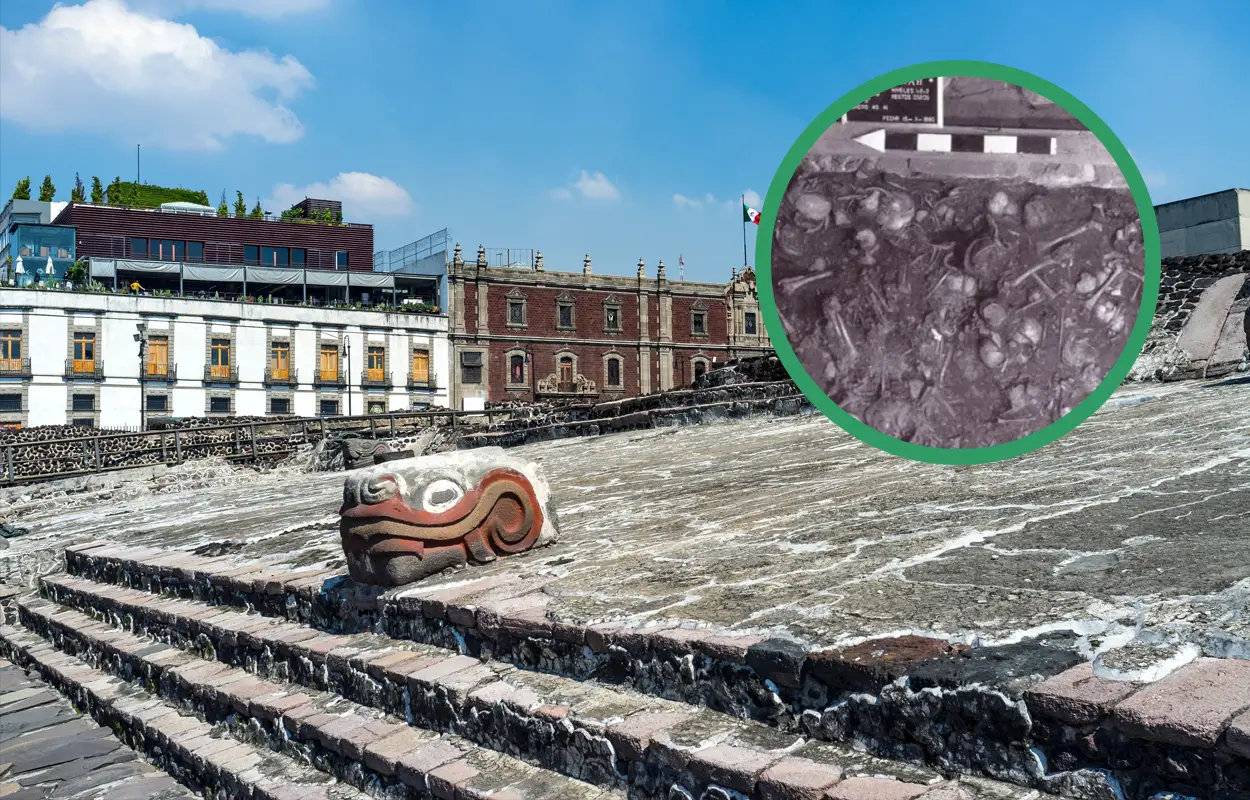Excavations conducted between 1980 to 1981 by the National Institute of Anthropology and History (INAH) uncovered the remains of at least 42 infants at Templo Mayor, the most important temple complex in the Mexica city of Tenochtitlan (Mexico City).
The temple, known in the Nahuatl language as Huēyi Teōcalli, was dedicated to both Huitzilopochtli, the god of war, and Tlaloc, the god of rain and agriculture. Each deity had its own shrine situated at the top of the pyramid.
The temple was mostly destroyed following the Spanish conquest and was disassembled to be used as building material for the construction of the Spanish colonial city.
According to a new study by INAH, the infant burials were sacrificial offerings to Tlaloc in an attempt to end a severe drought that affected the Basin of Mexico in the 1450s.
The offerings were mostly boys aged between 2 to 7 years old, who were placed inside an ashlar stone box. Some of the burials have funerary offerings, such as necklaces of chalchihuites and a bead of green stone in the oral cavity.
Further sacrifices were ritually placed above the stone box, where archaeologists found a layer of blue pigment and associated offerings of gourds, marine animals, small birds, an obsidian blade, and sculptures of polychrome tezontle, which imitate jars with the face of Tlaloc.
INAH researchers have linked geological data to confirm a large-scale drought from 1452 to 1454, which corresponds with the IVa construction phase of the Templo Mayor during the reign of Moctezuma I, the second Aztec emperor and fifth king of Tenochtitlan.
López Luján from INAH said, “Everything seems to indicate that droughts in early summer would have affected the germination, growth and flowering of plants prior to the dog days, while autumn frosts would have attacked corn before it had ripened. Thus, the concurrence of both phenomena would have destroyed the harvests and led to prolonged famine situations.”
The evidence shows the Mexica’s reliance on elaborate ceremonies to balance environmental challenges and highlights the vulnerability of the Mexica State to prolonged climate-induced crises.
Header Image Credit : Shutterstock
Sources : INAH





